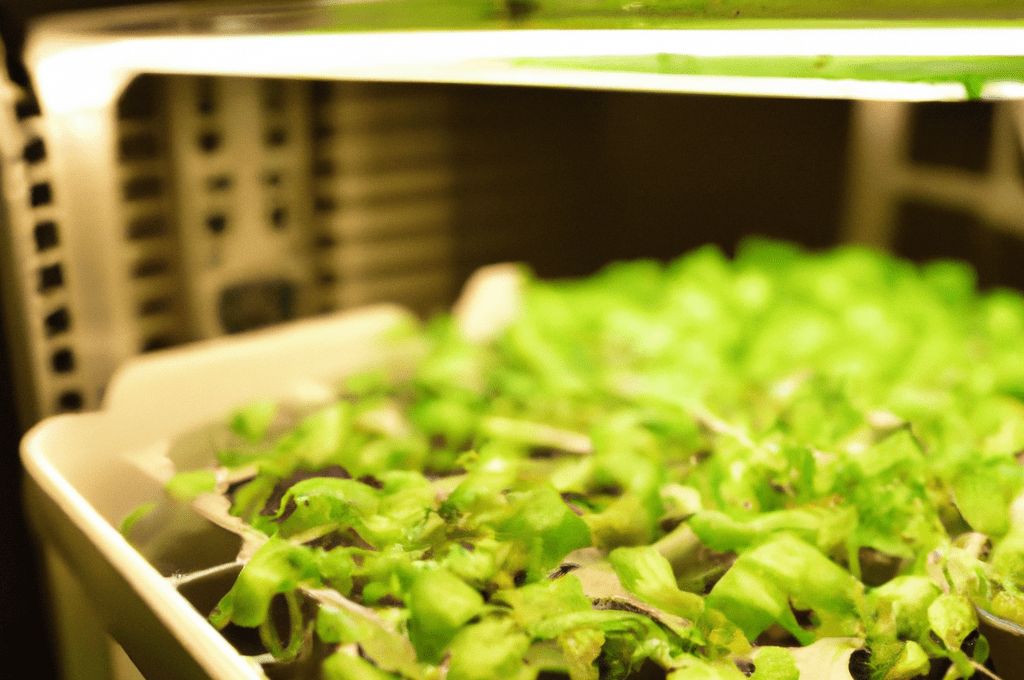Are you looking for a safe and easy way to grow fresh greens at home? Look no further than hydroponic microgreens! With this soil-free, high-yield growth technique, you can enjoy fresh, organic microgreens in just 10 to 15 days.
To get started, all you need are some growing trays, microgreen seeds, lights, water, nutrient solution, and a pH testing kit. The hydroponic technique allows plants to be grown in water instead of soil, resulting in up to 10 times less water usage and better control of nutrient balance and fertilizer.
Plus, with the right setup, you can have a steady supply of microgreens that are free from harmful chemicals and pesticides.
So why not give hydroponic microgreens a try and enjoy the benefits of fresh, homegrown greens today!
Quick Summary
- Hydroponic growing of microgreens uses water to deliver nutrients and oxygen to the roots, resulting in a soil-less and less messy method of cultivation.
- Organic microgreen seeds bred specifically for hydroponic cultivation produce the densest yields.
- T5 or T8 fluorescent lights or LEDs designed for indoor cultivation are preferred for indoor hydroponic growing of microgreens.
- Microgreens are ready to harvest after 10 to 15 days when their first set of ‘true leaves’ have developed and can be stored in a resealable bag or container in the fridge until ready to use.
Growing Technique
To grow hydroponic microgreens, you’ll need to use a soil-less technique that delivers nutrients and oxygen through water. This method allows for better control of nutrient balance and fertilizer, which ultimately results in higher crop yield.
Indoor lighting is essential for microgreens as they require around 12-16 hours of light per day to grow. T5 or T8 fluorescent lights or LEDs designed for indoor cultivation are preferred for indoor growing.
To achieve the best results, it’s important to maintain the correct nutrient balance. A liquid nutrient solution or compost tea can be used to fertilize microgreens. It’s essential to monitor the pH level of the water-nutrient solution using a pH testing kit and adjust it to the desired range of 5.5 to 6.5.
By following these steps, you can grow healthy and nutrient-dense microgreens without soil.
Can Rockwool Be Used for Growing Hydroponic Microgreens?
Rockwool hydroponic solution is an excellent choice for growing hydroponic microgreens. Its porous nature allows for proper aeration and retention of moisture, providing a favorable environment for root development. The nutrient-rich solution can be easily absorbed by the microgreens, promoting healthy growth and optimum yield. With its versatility and effectiveness, rockwool is a go-to medium for hydroponic microgreen cultivation.
Requirements and Materials
You’ll need specific materials such as growing trays, a substrate, seeds, lights, water, nutrient solution, pH testing kit, and spray bottle when growing your own microgreens through hydroponic techniques. Here are the details about each material you will need:
-
Growing trays with drainage holes are necessary to allow excess water to drain from the substrate.
-
A hydroponic substrate, such as coconut coir or rockwool, will provide a stable base for the microgreens to grow on.
-
Organic microgreen seeds bred specifically for microgreen cultivation produce the densest yields and are preferred for hydroponic growing.
-
T5 or T8 fluorescent lights or LEDs designed for indoor cultivation are necessary for providing adequate light to the microgreens.
In addition to these materials, you’ll also need to create a DIY hydroponic set up, which involves mixing a nutrient solution and adjusting the pH of the water. The benefits of using organic microgreen seeds are that they are bred specifically for microgreen cultivation and will provide the densest yields. With the right materials and set up, you can easily grow healthy and delicious microgreens using hydroponic techniques.
Steps for Growing
First, choose your desired microgreen seeds and add them evenly onto the surface of the hydroponic substrate. Give them a gentle misting with pH-adjusted water or water-nutrient solution to help the seeds germinate.
Cover the seeds for 3 to 5 days in darkness to encourage sprouting.
After sprouting, place your microgreens under indoor lighting or in a sunny spot to help them grow strong and healthy. Make sure to water them with pH-adjusted water or a weak water-nutrient solution.
Remember to check the pH levels regularly with a testing kit and adjust as needed. With the right seed selection and indoor lighting, your hydroponic microgreens will be ready to harvest in just 10 to 15 days, giving you a high-yield crop without the need for soil.
Frequently Asked Questions
How do you ensure proper air circulation for hydroponic microgreens?
To ensure proper air circulation for your hydroponic microgreens, use an oscillating fan for airflow management and monitor humidity levels to prevent mold growth. This will keep your microgreens healthy and safe for consumption.
Can you reuse the substrate for growing multiple batches of microgreens?
Yes, you can reuse the substrate for growing multiple batches of microgreens. This is a sustainable practice that reduces waste and saves money. Add fresh nutrient solution and adjust pH before planting new seeds.
What is the ideal temperature range for growing hydroponic microgreens?
To ensure the best growth rate for your hydroponic microgreens, keep the temperature between 60-75°F. This optimum temperature range will provide a safe and stable environment for your plants to thrive and produce the highest yield.
How can you prevent algae growth in the water-nutrient solution?
To prevent algae growth in your nutrient solution, maintain proper maintenance. Keep your trays and equipment clean, change your solution regularly, and avoid overfeeding your microgreens. This will ensure a healthy environment and high-quality growth.
Can you grow hydroponic microgreens outdoors?
Yes, you can grow hydroponic microgreens outdoors with an outdoor hydroponic setup and natural light. However, you may need to protect them from extreme weather conditions and pests.








